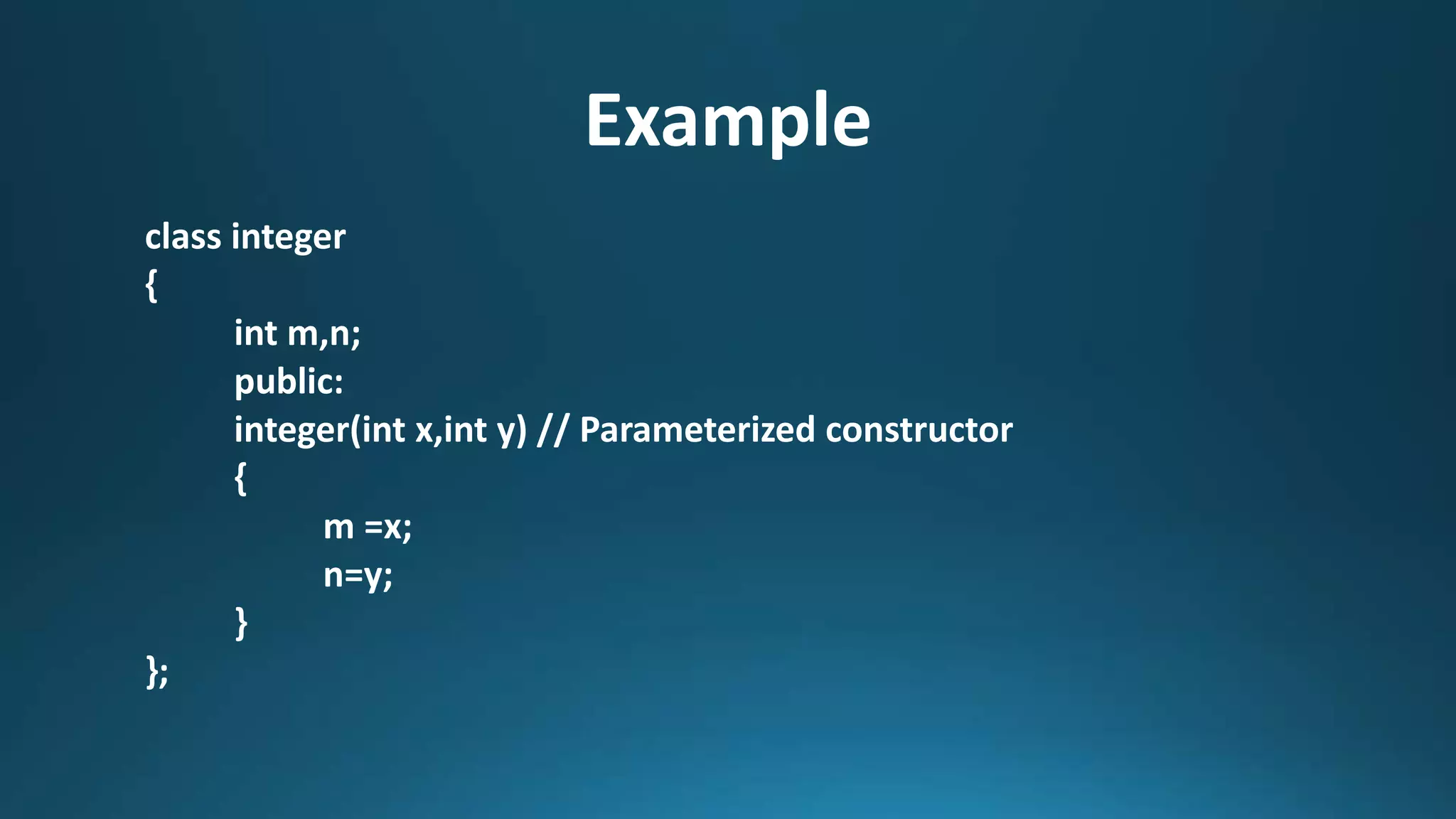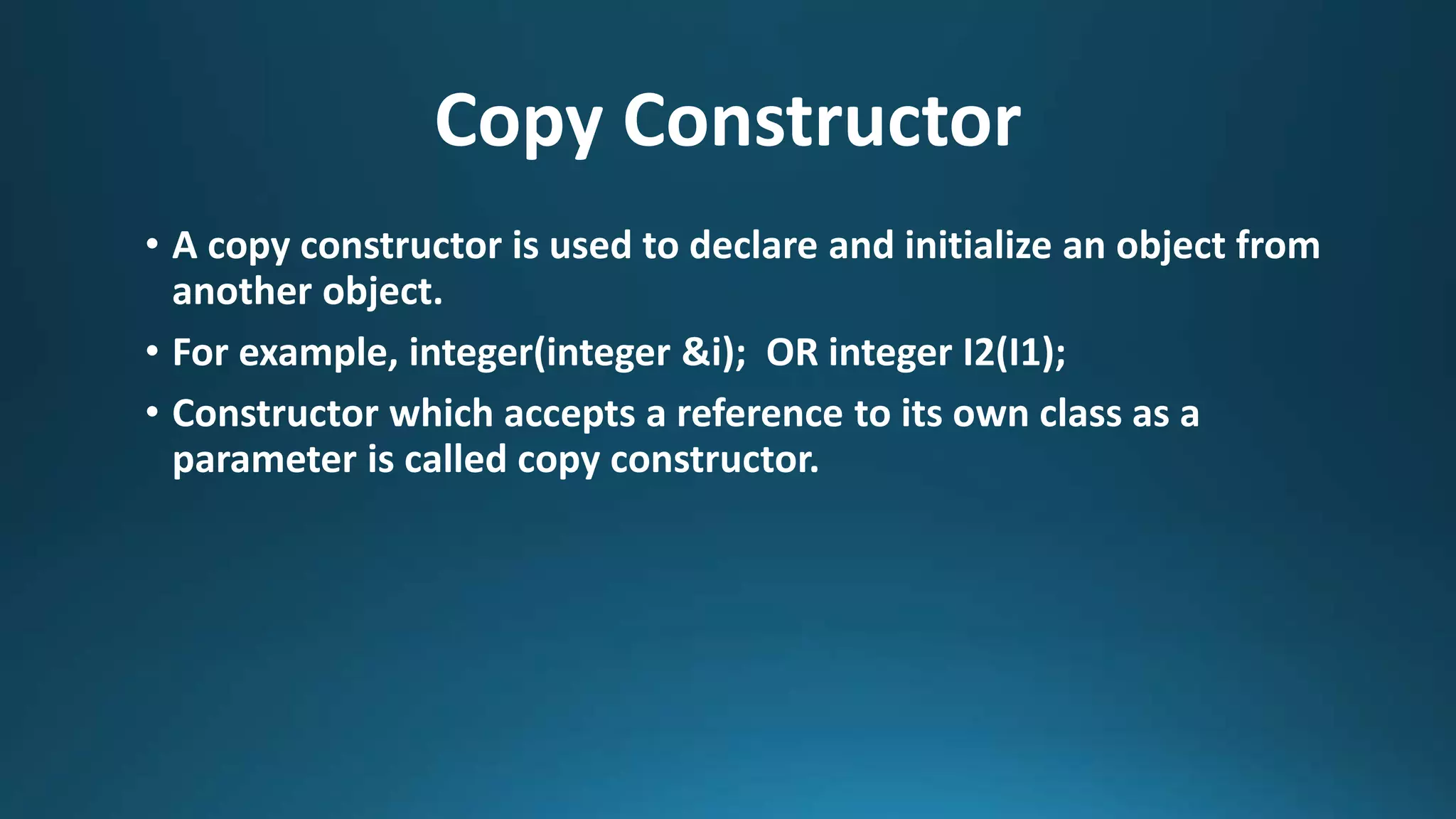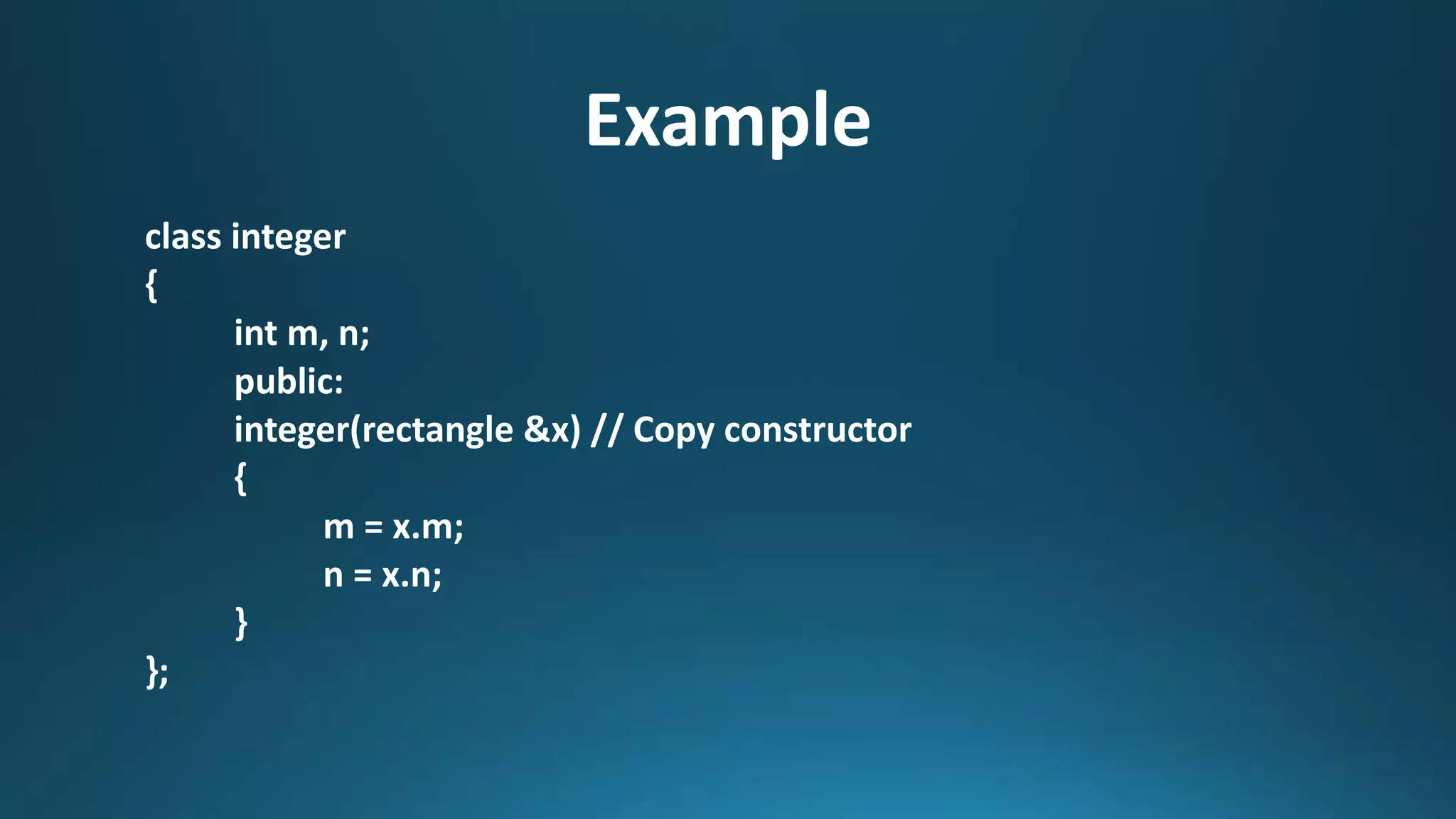The document provides an overview of constructors in object-oriented programming, detailing their properties and types. It describes three primary types of constructors: default, parameterized, and copy constructors, each with specific functionalities and examples. The document highlights key characteristics such as naming conventions, invocation rules, and limitations related to constructors.













